You have no items in your shopping cart.
0
You have no items in your shopping cart.
Say hello to the all new Alpine WebLock 6.1!
This new weblock design takes features from our much loved Alpine WebLock 4 and combines them with more modern touches from the Alpine WebLock 5 as well as introduces some new features that have yet to be seen in the weblock world.
From a massive center diverter with a fully function becket within, to the largest anchor hole we've ever created, to a non-spinnable front pin, there are tons of features packed into this lovely device. The Alpine WebLock 6 is a strong, versatile, and user friendly weblock meant for general purpose slacklines, longlines, and highlines.
Made in the US from globally sourced components.
In the design stage of the Alpine WebLock 6.0, we took into account the communities love for the various generations of Alpine Weblock. Starting with the 3.0, we have done either a 2-piece or a single billet design. This allows for some pretty sleek geometry that also offers substantial strength and usability that we definitely wanted to include with this new iteration.
Stemming from there, we took the large diverter with a mostly round shape from the Alpine Weblock 3 and added additional size to it, making for one of the largest diverters on the market. This gives substantial surface area for the webbing to grip to the AWL within it's wraps. This helps with slippage, strength retention, and, curiously enough, tensioning.
Furthermore, we took the shape of the widely loved AWL4, and added a bit more size to the anchor hole, lengthend the distance from the diverter to the back rails, added soft release rails, and opened up the center diverter slightly. This gives us a rough AWL4 shape with the added strength of the higher grade aluminum and billet design with soft release compatibility and additional rigging points.
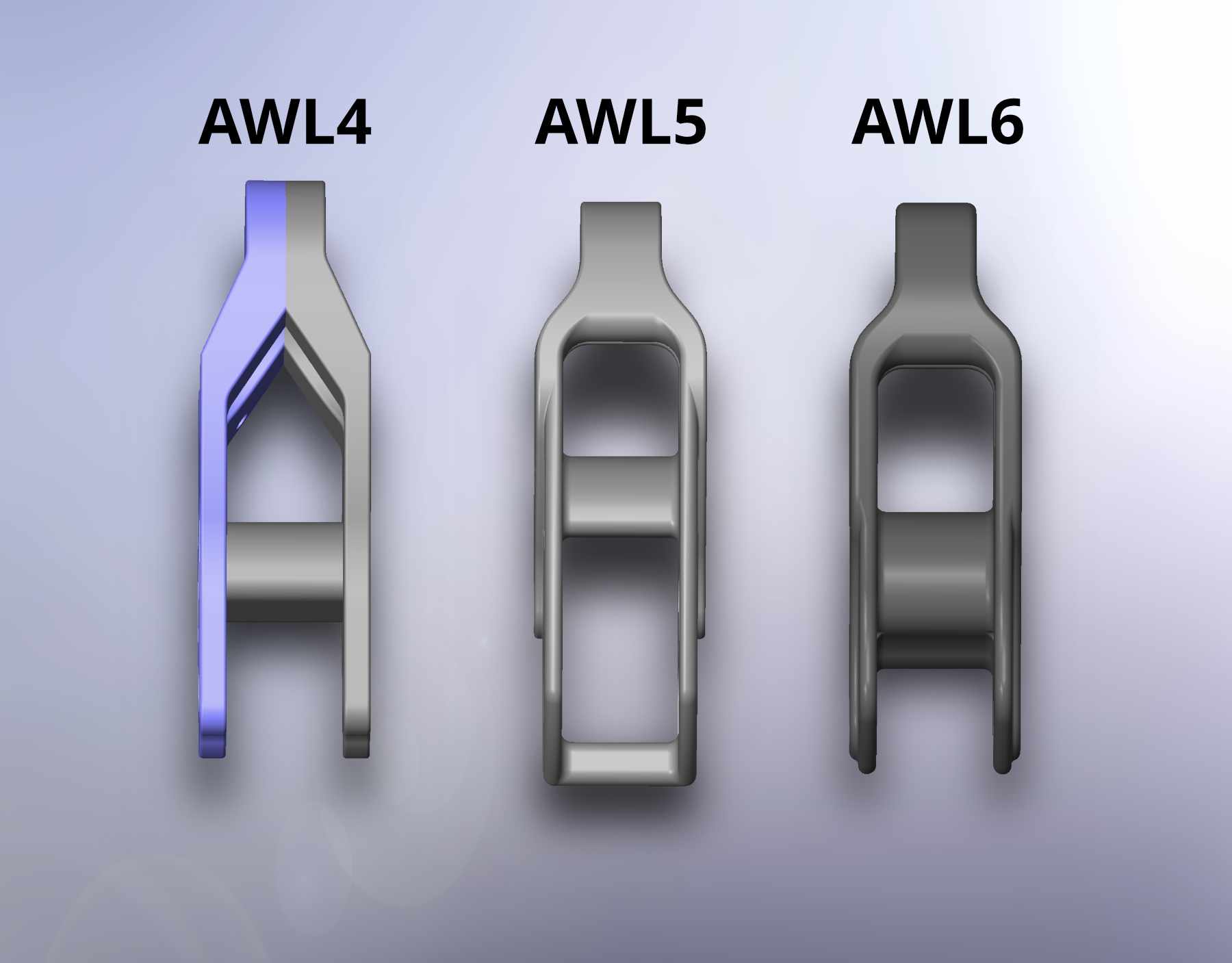
Lastly, the AWL5. This generation of weblock brought a lot of cool features to the world of webbing anchors. We saw the first billet designed weblock, the first weblock with both a large anchor hole and direct soft release compatibility, and the first weblock with a functional becket. The AWL6 incorporates all of these features in a stronger, and more complete way. It retains the form and function of a more standard weblock while having the features of a more modern weblock.
We will look at all these features further below
Through the ages of weblock usage, it has become quite clear that this device is used for much more than locking webbing. In fact, the weblock has turned into our progress capture for our tensioning systems, a rigging point for tagging and tensioning, and a master point for large systems. For this reason, having certain functionality built in to the weblock has become a must!
This starts at a functional becket: somewhere you can reliably rig off of. We've had beckets before on our AWL devices, however, the AWL6 has two (2) fully functional beckets: one for over the webbing and one for under!
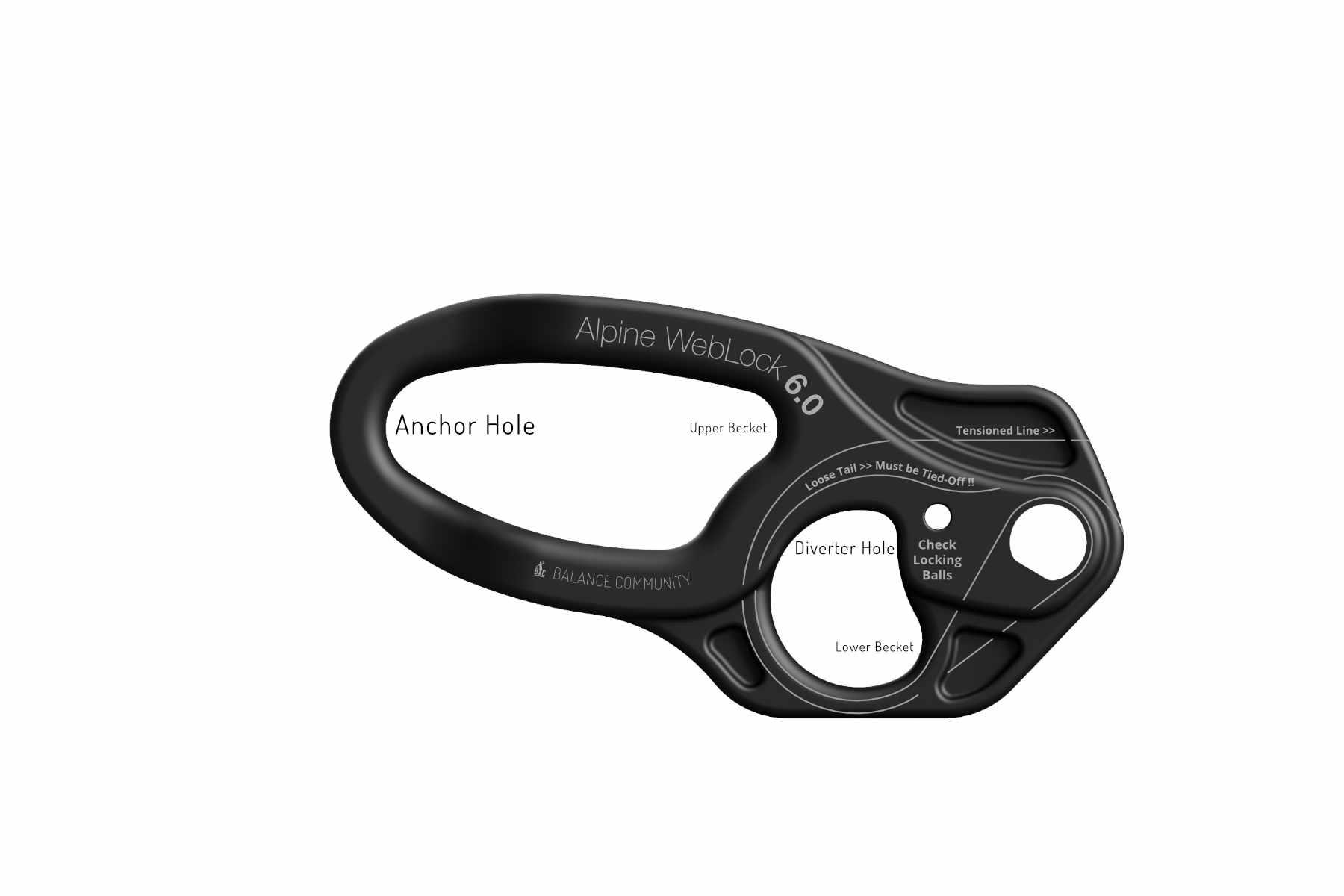
The upper becket has a working load limit (WLL) of 8 kN, the perfect amount for using that pulley system to tension your longline in the park. This becket is located within the large anchor hole. The front of that hole is designed to have the load path sit above the webbing when it's installed in the device. This makes tensioning with an external tensioning system quite easy and streamlined.
The lower becket has a working load limit (WLL) of 10 kN, more than enough to rig with a compound Buckingham system, or connect various other components of your rigging. This becket is located within the diverter hole. The dimensions of the weblock are such that the load path when using this becket puts your rigging below the installed webbing. A perfect point to add a redirect for a multiplied Buckingham or install your low stretch sling for a compound system.
It's recommended to use a small sling when rigging off of the beckets. Directly connecting hardware to either location is not recommended due to the width of these connection points.
Anchor holes, gotta love them! We use so many different connectors, slings, and hardware when rigging our anchors, having a lot of space to connect things is very beneficial and adds a lot of ease to the setup of a slackline or highline.
The AWL6 packs the largest anchor hole we've ever included in an Alpine WebLock. You can fit 4 strands of green spanset, 12 strands of 9mm rope, and essentially every shackle that we use in the slackline world (pin or bow side). All these things can fit while still retaining enough room to tie a backup AND do your tail tie-off in the anchor hole! It's massive!
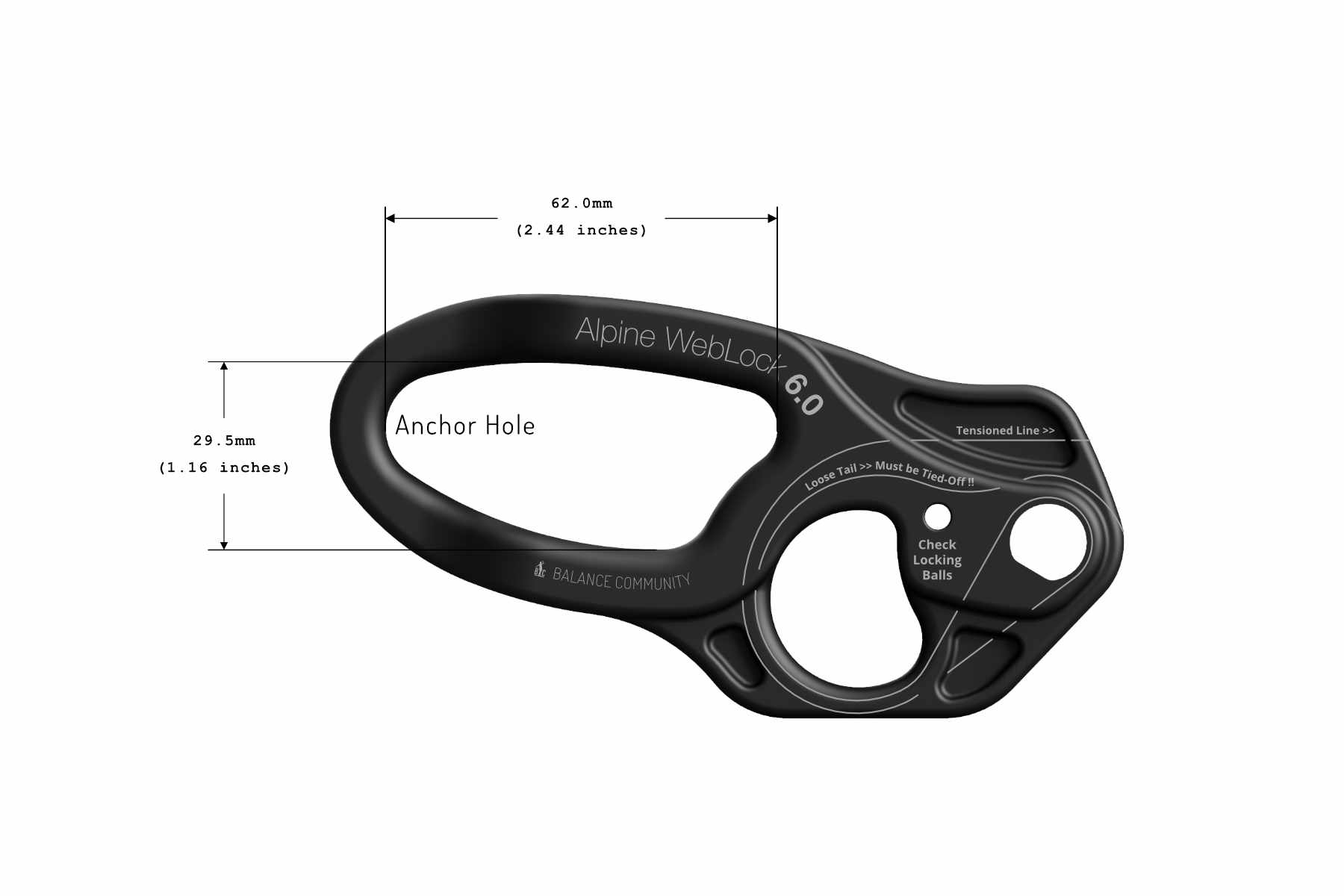
Sporting a size of 62mm long by 29.5mm tall and an area of 1,367 mm2, it's 53% larger than the AWL5 anchor hole and 13% larger than the AWL4 anchor hole! All within a package that's smaller than both!
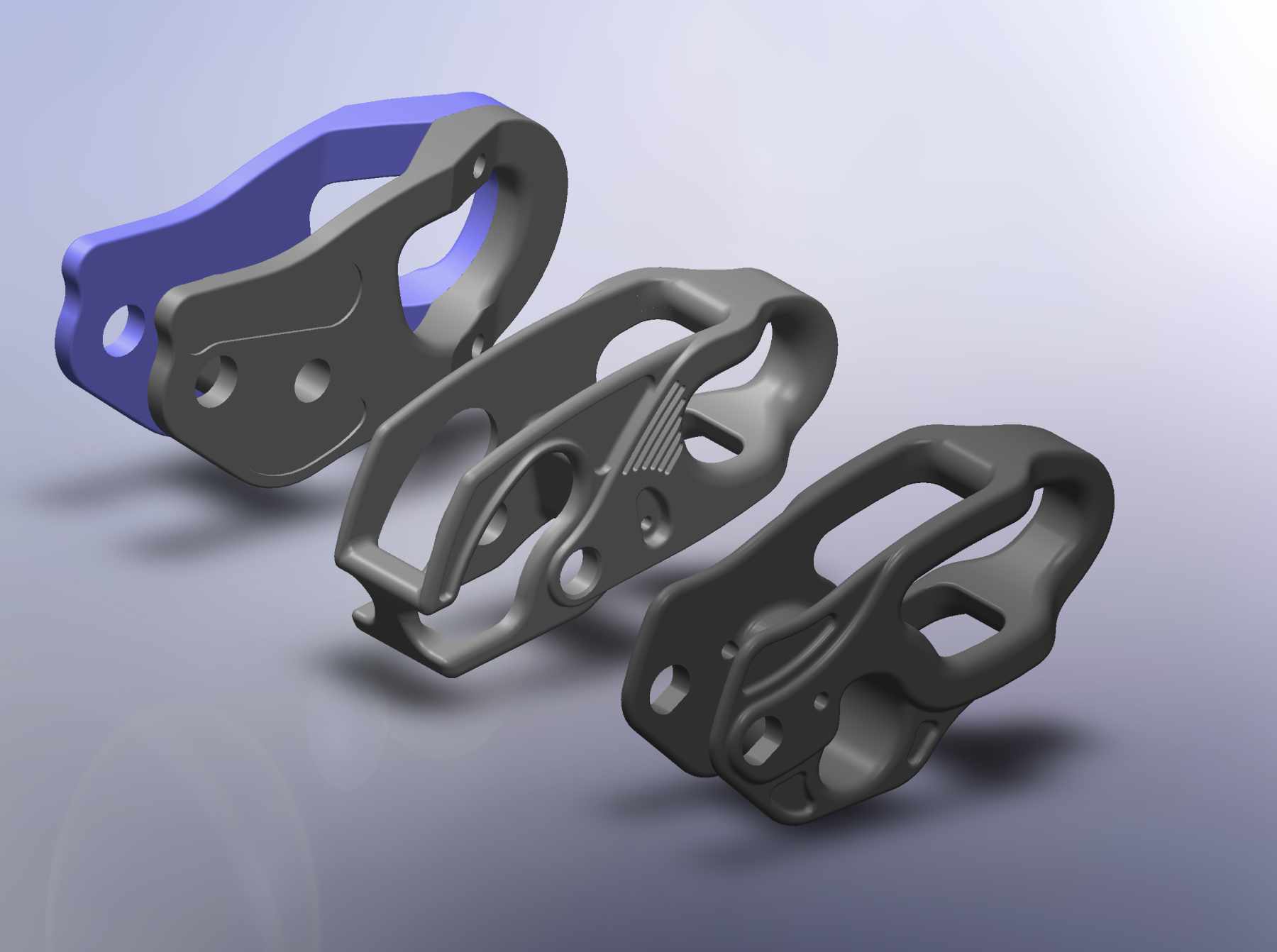
Not only can you attach the AWL6 with most connectors and soft rigging, it has also been optimized to work directly with a soft release! Simply pass your soft release strands down through the device and the back rails align perfectly to guide the soft release in an optimal way. Truely an all-in-one device.
All that room, plus you get a fully usable diverter hole! So much space for rigging!
Weblock front pins are a major pain point in modern weblock designs. We've found that a large majority of the problems that happen to front pins are a result of them spinning during usage. These types of pins were not designed to spin. The spinning adds wear on the locking balls and the mechanism, causes torque on the pin head (which can lead to total failure as we saw with the AWL5), and is detrimental to the functionality in general!
With the AWL6, we aimed to get rid of that problem. We have designed the front pin so that it is not able to rotate at all. There is a flat edge on one side of the pin that mates with a flat edge in the front pin hole on the weblock body. This gives the pin a single orientation that it will sit in throughout the usage of the device. So, when passing slack through the weblock, it will simply glide over the pin rather than causing it to spin. A major win.
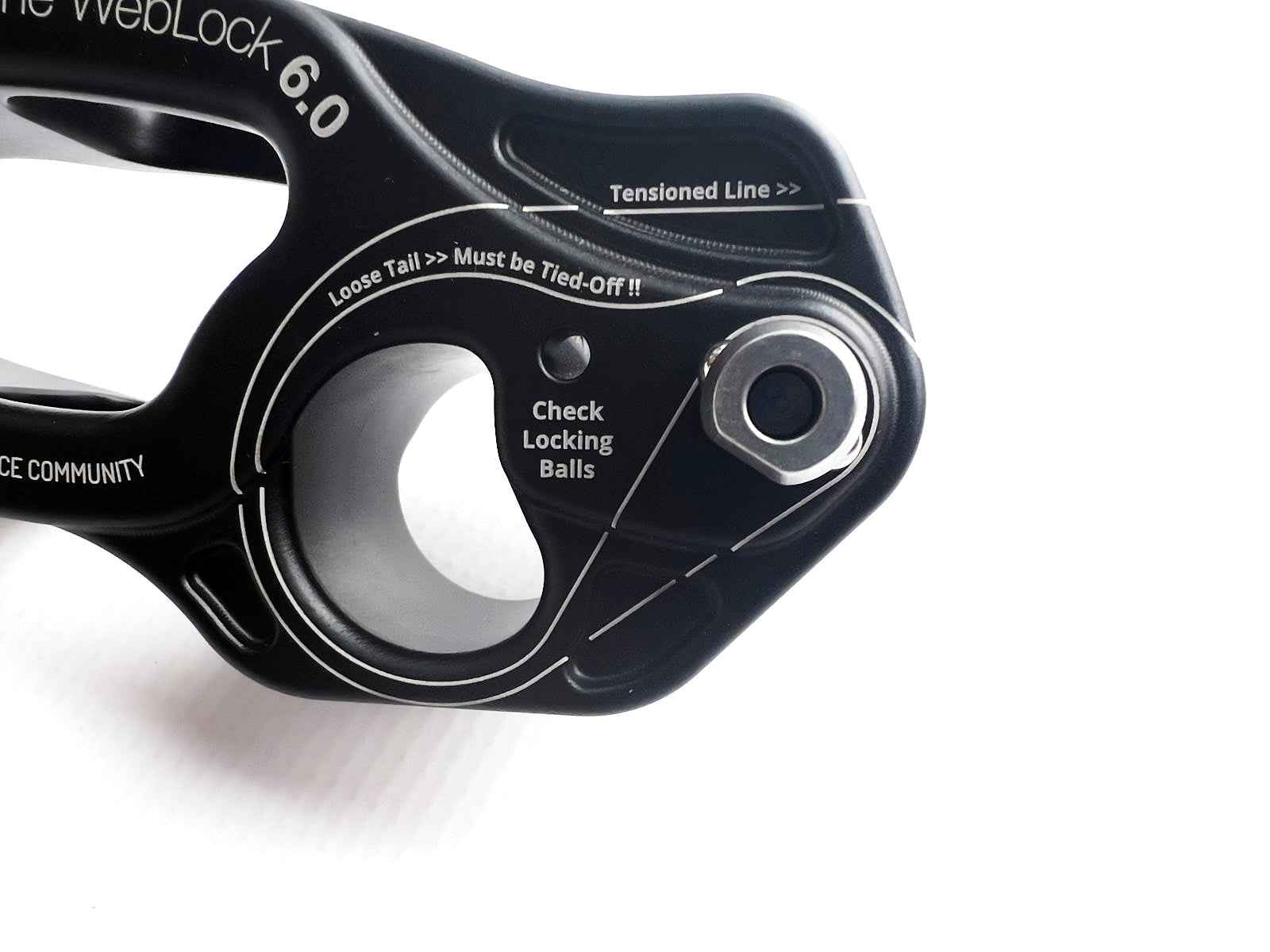
In addition to that, we made it possible to install the pin from either side of the device. To change the side you want your pin to install in, you will need to untie the retention cord and insert it on the opposide side of the body on the weblock. Instructions will follow.
The AWL6 does not come with a built-in tie-off method like the AWL5 did. We saw many problems arise from that sort of system, so we ditched that idea with this iteration of the weblock. Instead, we have provided two locations on the device where you can install a standard knotted tie-off.
Depending on what you want to have access to after the rig is done, you can choose where to tie-off your webbing from one of two locations. You can either use the standard ISA or poppable fishermans hitch on the anchor hole of the AWL6 or you can do the same through the diverter hole! Either spot will do the job just as well as the other, but will provide access to different spots on the weblock after complete.
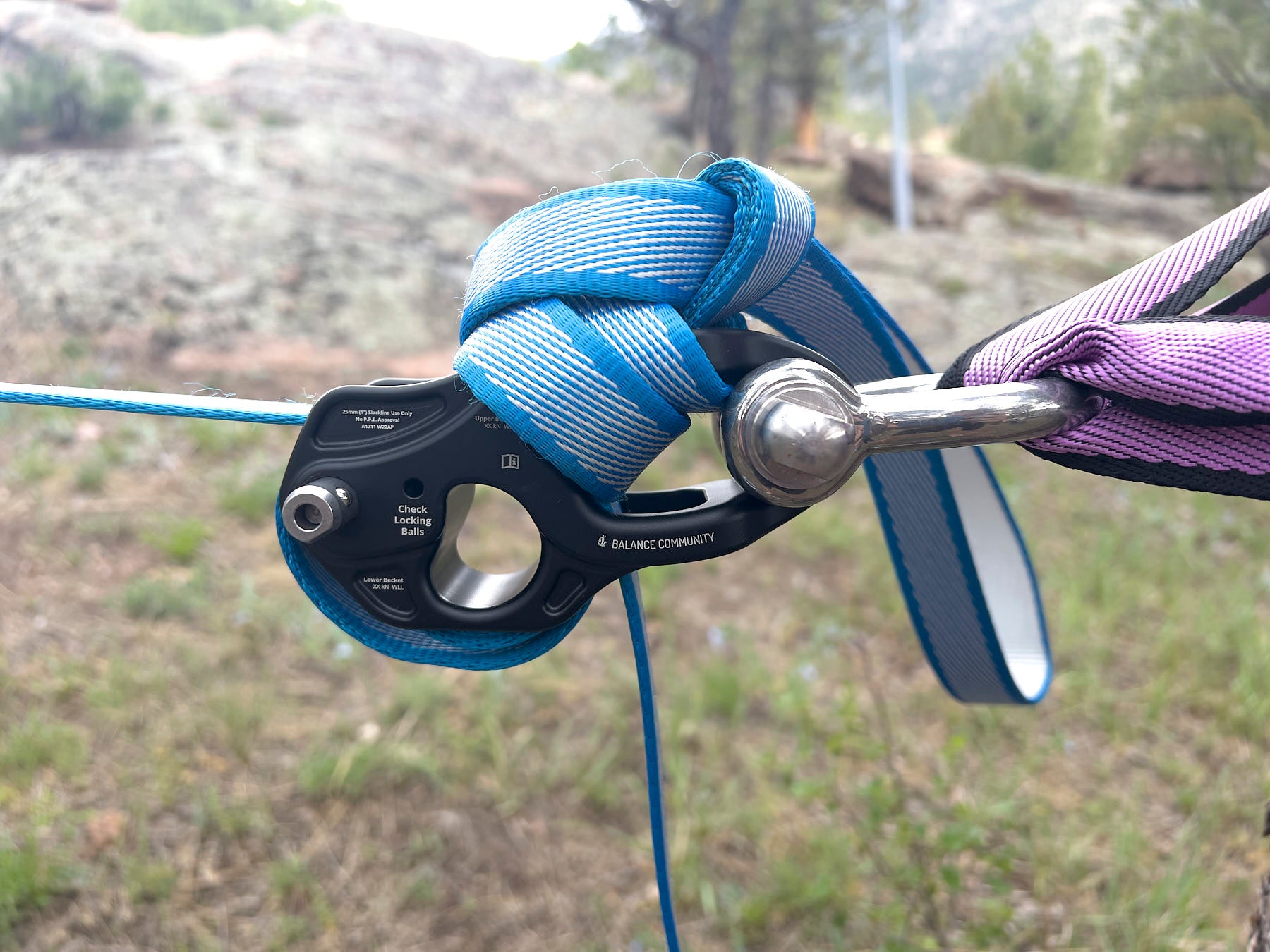
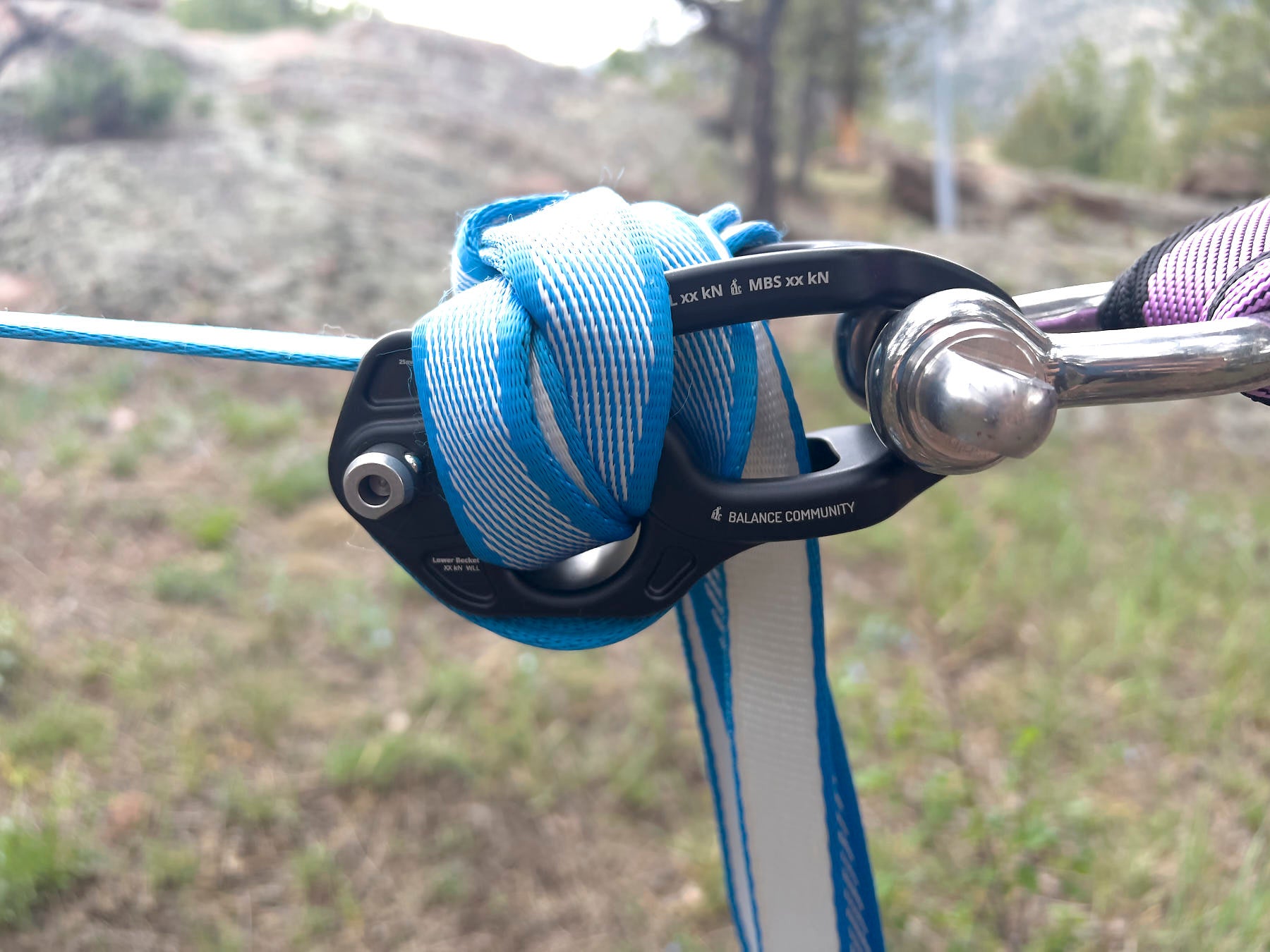
If you want to have access to the anchor hole for additional backups, further rigging, or just to be able to inspect your anchor strands or soft release after rigging is complete, it is recommended that you do your tie-off through the diverter hole. If you want to have access to the diverter hole for easy tensioning, backup attachment (do not rely solely on the AWL6 as your backup anchor, you must have a secondary connector here), or an easy place to clip, it is recommended to do your tie-off through the anchor hole.
View on full playlist on YouTube here - https://www.youtube.com/playlist?list=PLxeQHorY48gJ1he2vbLpROFkz_ostU02O
Length – 126.0 mm (4.96 inches)
Width – 72.7 mm (2.86 inches)
Height – 67.4 mm (2.65 inches)
Diverter Diameter – 38mm (1.50 inches)
Weight –
Approved Webbing Widths – 24.0 - 26.0 mm (0.94 - 1.02 inches)
Pin Diameter – 12.0 mm (0.47 inches)
Pin Length – 38.3 mm (1.51 inches)
Length Behind Diverter – 32.0mm (1.26 inches)
MBS – 84.0 kN (18,883 lbf)
WLL – 12.0 kN (2,698 lbf)
Upper Becket MBS – 56.0 kN (12,600 lbf)
Upper Becket WLL – 8.0 kN (1,800 lbf)
Lower Becket MBS – 70.0 kN (15,750 lbf)
Lower Becket WLL – 10.0 kN (2,250 lbf)
Design Factor – 7 to 1
Body Material – Anodized Aluminum Alloy 7075
Pin Material – CRES 17-4 pH Stainless Steel
Handle Material – Anodized Aluminum Alloy 2024
Ball Material – CRES 440C Stainless Steel